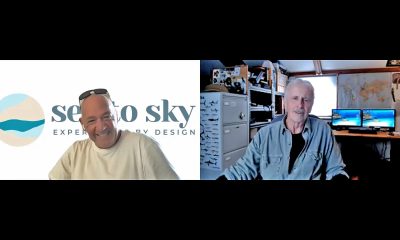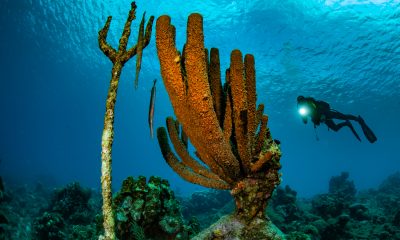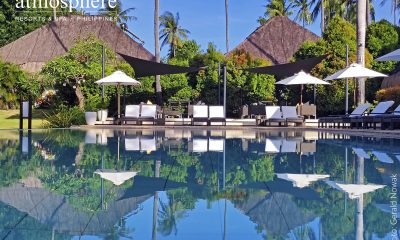News
Pierre-Yves Cousteau’s Galapagos: Final Dives
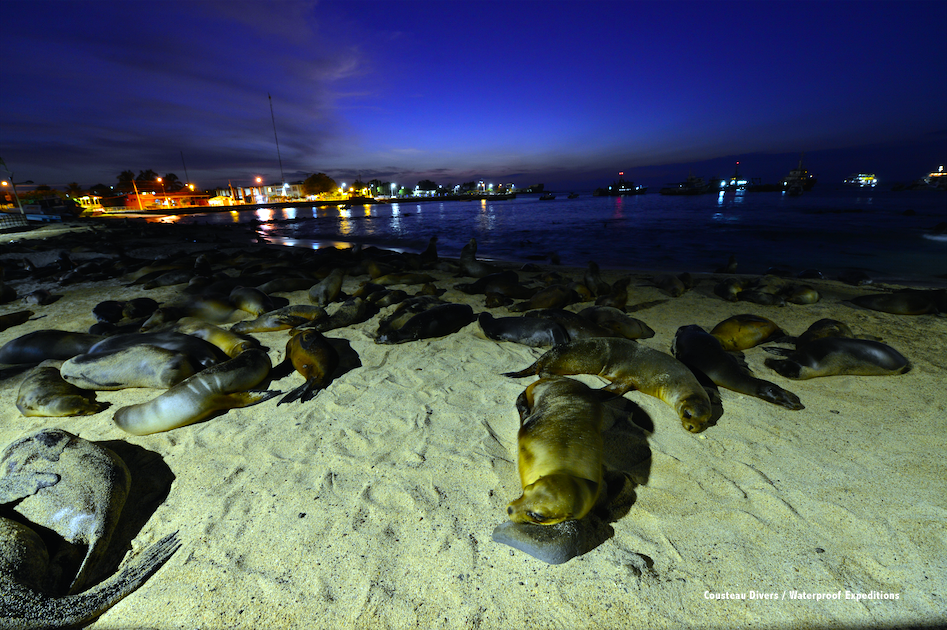
Read Part 2 of Pierre-Yves’ Galapagos blog here.
One week in San Cristobal followed by a second diving expedition. Nothing scheduled but sunsets the first week. The waterfront of San Cristobal is forever bathed in the pungent smell of sea lion body odour. The Loberia and Punta Carola offer beautiful waves and vast spaces of peaceful wilderness. With nothing else to do, I decide to investigate further the establishment of the new marine sanctuary of Wolf and Darwin and its impact on the local population.

I make my way to the Loberia, a beautiful rocky coast with beaches and powerful waves, to watch the sunset. I take a taxi to go there and back and ask the cab driver about the new sanctuary. He says many families on San Cristobal are fishermen, and that some of them used to go to Wolf and Darwin. He says there was a fishermen’s protest in the village that very morning in town. They are claiming their right to fish in Wolf and Darwin. He says that the three representatives of the fishermen cooperatives signed the agreement to make the sanctuary without consulting with their peers. He mentions rumors of bribery.
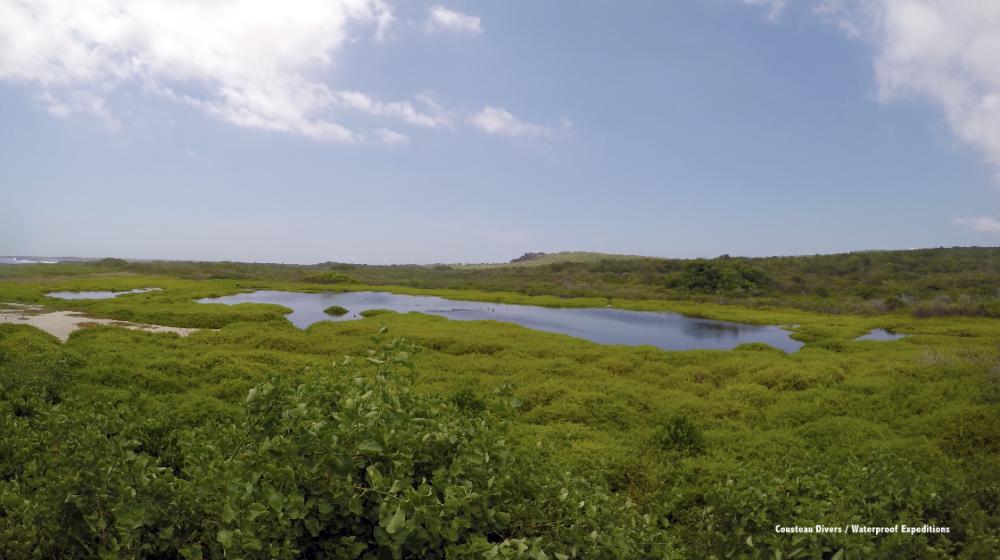
I head to the mayor’s office to get his opinion about the new sanctuary. He says the sanctuary was imposed onto the fishermen, that they were not sufficiently consulted or compensated, and that they should be considered in these kinds of decisions. Regarding tourism in general, he says he wishes the marine activities related to the sanctuary benefitted the people of the islands more than they do, implying that foreign companies capture much of that value.
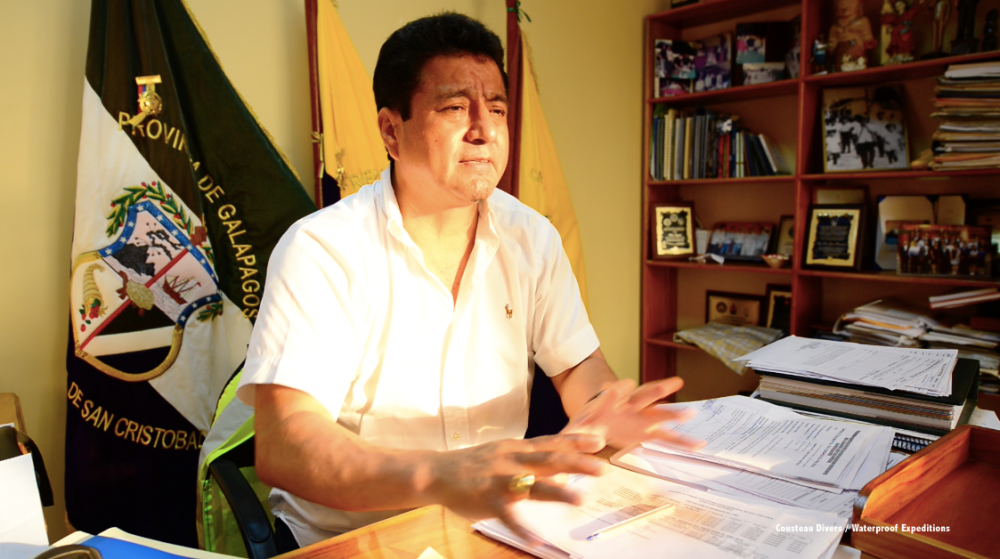
The next day I have lunch with Roberto Ochoa, a conservationist with marketing background who works with the ministry of tourism. He was part of the initiative to declare Wolf and Darwin no-take zones and joined their expedition earlier this year. According to their observations over 40 days, these two islands have the highest shark abundance in the world! He says the fishermen were not only consulted, they were also compensated for not fishing, subsidized to ease their reconversion to another professional activity. Later, a meeting with representatives of the ministry of environment of Ecuador reveals that much effort was put into building local consensus. They are shocked to hear about the protests, and say that the same people who are protesting signed the documents agreeing to the sanctuary.

Why are there two opposite stories being told? How come the fishermen were demonstrating? Did the consultation and compensation package miss out some key stakeholders? Did the news of a compensation package suddenly turn the inhabitants of the island of San Cristobal into fishermen? The week goes by and I am unable to find an answer. Enforcing the sanctuary will be as hard as it is remote and uninhabited. Raising awareness and educating the local population to the world-class value of their natural resources will be extremely important in order to foster stewardship. The presidential signature last week marked the beginning of an endless endeavor, not the landmark of an accomplishment.
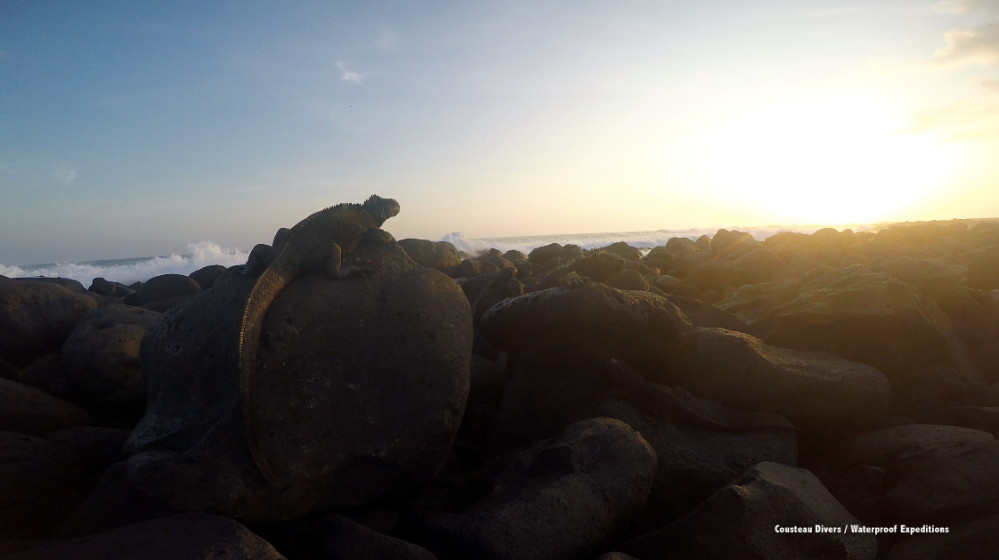
Seven sunsets later, I’ve met kind and interesting people in San Cristobal. I’ve seen sea lions crash salsa lessons and marine iguanas basking on black rocks, spitting seawater from their nostrils. I spoke to the students of San Francisco University about marine conservation issues and a small group stayed afterwards to discuss possible solutions out of the mess we’re in. Dying oceans… a collateral damage of our materialistic hypnosis. The silver bullet, if there is one, may reside in cultural and technological innovation. We also discuss bottom-up conservation and the empowerment of local communities to manage their resources, the decentralisation of environmental decision-making. It is inspiring to see an enthusiastic and energetic young generation, motivated to make the world a better place.
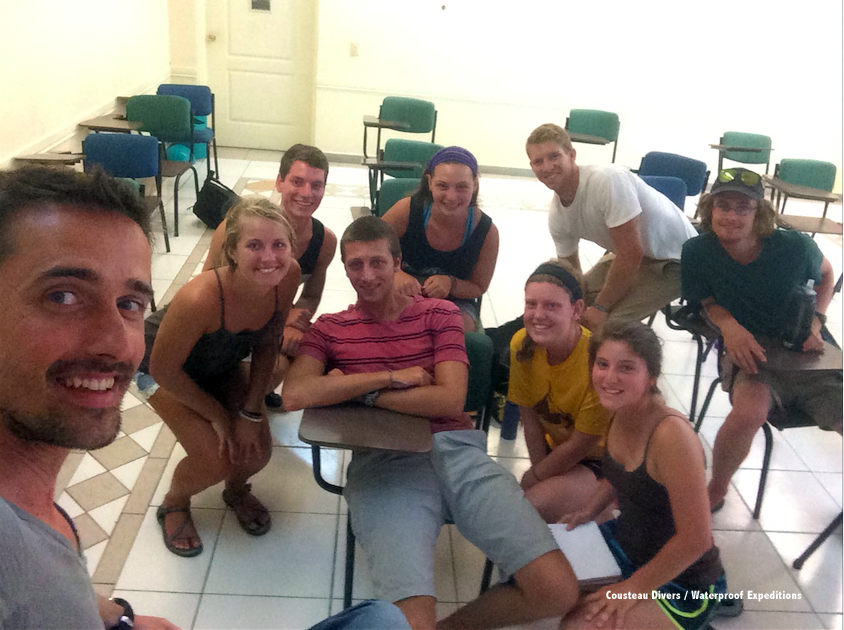
Finally, I board the Galapagos Sky again and I meet the new passengers of this second expedition. They are mostly Indians from Bombay, from a variety of professional backgrounds, but also an English mathematician and banker couple and an American physicist with his retired army friend. Discussions on board range from spirituality and shamanism to quantum physics. New questions arise from our discussions… How can behavioral change be fostered in emerging economies, based on lessons learned from western countries? How can environmental stewardship compete for brain bandwidth, using the phenomenal behavioral conditioning machinery that is advertising and marketing. One day perhaps, faced with environmental emergency, mankind will use the powerful tools that created the problem to steer the ship.

A few days later, we are diving again, in what I now feel is the richest, most extraordinary dive site in the world. Every instant of each dive in the Galapagos Islands, my attention is captured by some agitation of their untamed ecosystem. Everywhere around me, life is lush and surprising.

Near the island of Fernandina, the sea’s surface is littered with scavenging marine iguanas, breathing turtles and sunbathing sea lions. I befriend a puffer fish that follows me during a whole dive. A whale exhales in the distance.

In Isabella, sea lions follow in my blind spot to use the video lights to hunt. One of them photo-bombs a test-shot: I did not see it for the whole dive, but discover it in one of my pictures… In Bartolome, I lose orientation as I enter a cloud of dozens of Mobula rays, feeling as though I am one of them.
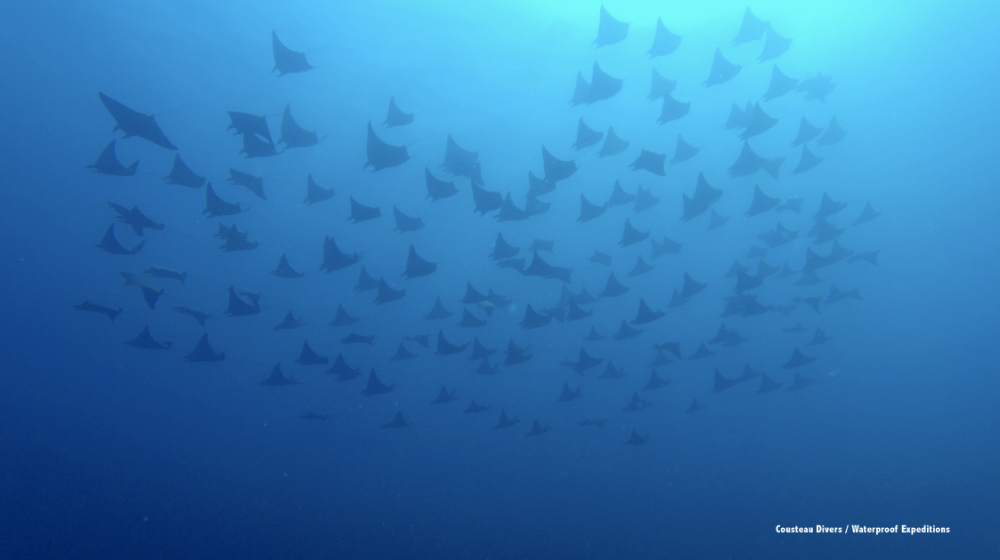
Back in Wolf and Darwin, rivers of fish flow along the rocky seascape against the current. Two white-tip sharks engage in a circular mating dance, the male biting down regularly on the female’s pectoral fins. Out of the deep blue, a group of hammerheads daringly approach me and scatter as soon as I can no longer hold my bubbles… Returning from the dives, dolphins play in the bow of our dingy.
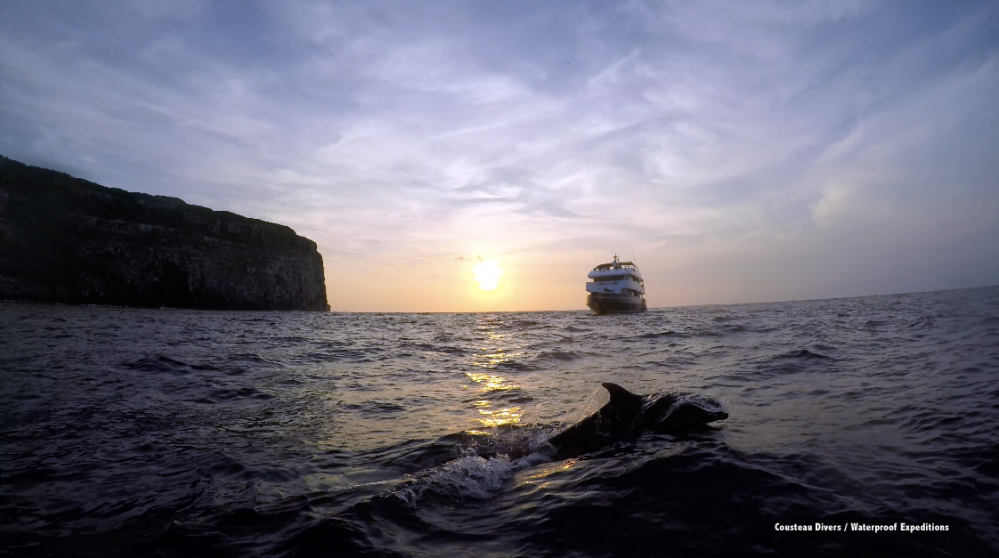
Temperatures varied greatly from site to site, from 19 to 28 degrees Celsius, and again I collected them using the Sensus Ultra and my dive computer as part of Project Hermes. The currents had greatly reduced since the last trip, and overall temperatures were a couple degrees lower. The El-Niño phenomenon seems to be receding here, just as corals begin to bleach on the other side of the planet, in Northern Australia. I leave the Sensus recording device with our guide Jeff, who agrees to using it on his dives year-round, which will provide a more comprehensive data set. This is the first of thirty locations to receive the temperature logger across the world.
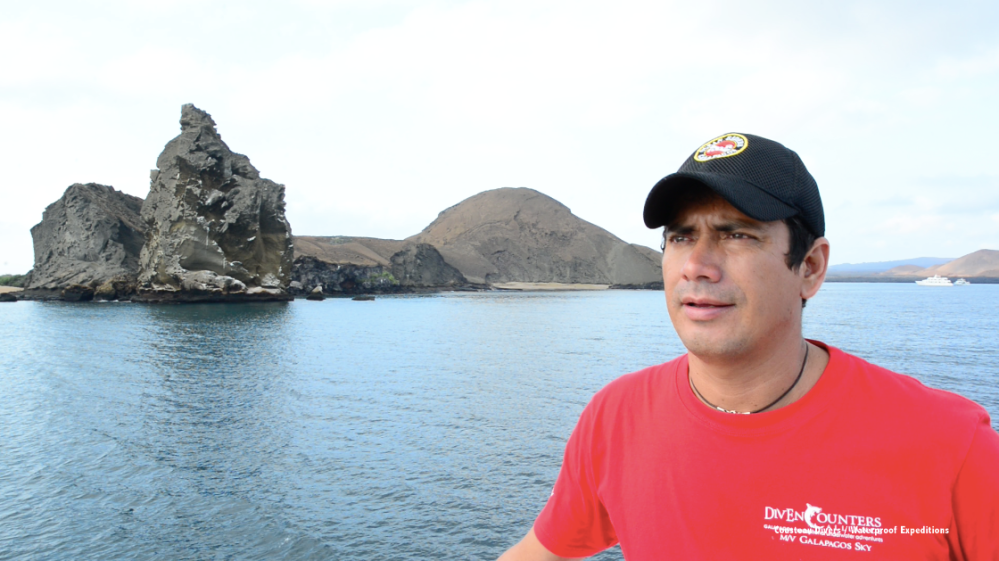
Just as I am zipping up my wetsuit and slipping into my BCD for the next dive, I spot a tiny ship approaching the Sky. Manned by two, it is a fishing craft. The captain hails them. They are perhaps the first poachers of the sanctuary, barely a week after it’s declaration. I can hardly believe the effort they have put into reaching these islands: on their minuscule vessel, they must have sailed for 3 days non-stop in the open sea to reach Wolf, the deck of their boat covered in gasoline containers. The captain tells them that they are not allowed here anymore. They reply that they know, but that their engine broke and that they drifted into the sanctuary… Sure. Today there are only 5 diving operators authorized in the sanctuary, taking turns. That means that at least 2 days a week there is nobody around to report illegal fishing. Our dive guide Jeff says that at least the presence of traditional fishermen dissuaded illegal poachers to enter in the past. The captain of the Sky argues that “traditional” fishermen were sometimes collaborating with poachers.

It seems that despite significant efforts to build consensus and help fishermen reconvert to tourism activities, the actual enforcement of the newly minted Wolf and Darwin sanctuary will be difficult. Let’s hope it’s not another “protection only on paper” and that a new socio-economic balance will be found that allows for meaningful conservation of this precious jewel of the ocean, one of the few remaining.
This concludes the story of the 2016 Cousteau Divers – Waterproof Expeditions Galapagos trip. I leave the islands and return to Europe to pursue my work with IUCN and Cousteau Divers. In the coming weeks, I will release a video compiling the most thrilling moments of the trip. Join me on the next adventure to Tahiti, in July 2017!
~ Pierre-Yves Cousteau
www.waterproof-expeditions.com
For more blogs from Pierre-Yves Cousteau, visit cousteaudivers.wordpress.com.
Blogs
TRAVEL BLOG: Jeff Goodman Dives SOMABAY, Part 1

For a week at the end of February I was invited to sample the diving with Orca Dive Club based at the Breakers Diving and Surfing Lodge by courtesy of SOMABAY.
Somabay covers an entire peninsula and is home to several resorts as well as residential compounds. Somabay caters for scuba diving as well as many other sports, including windsurfing, golf, sailing, go-carting, horse riding and many other activities.
All the activities are of a world-class standard and any or all of these can be booked directly from The Breakers.
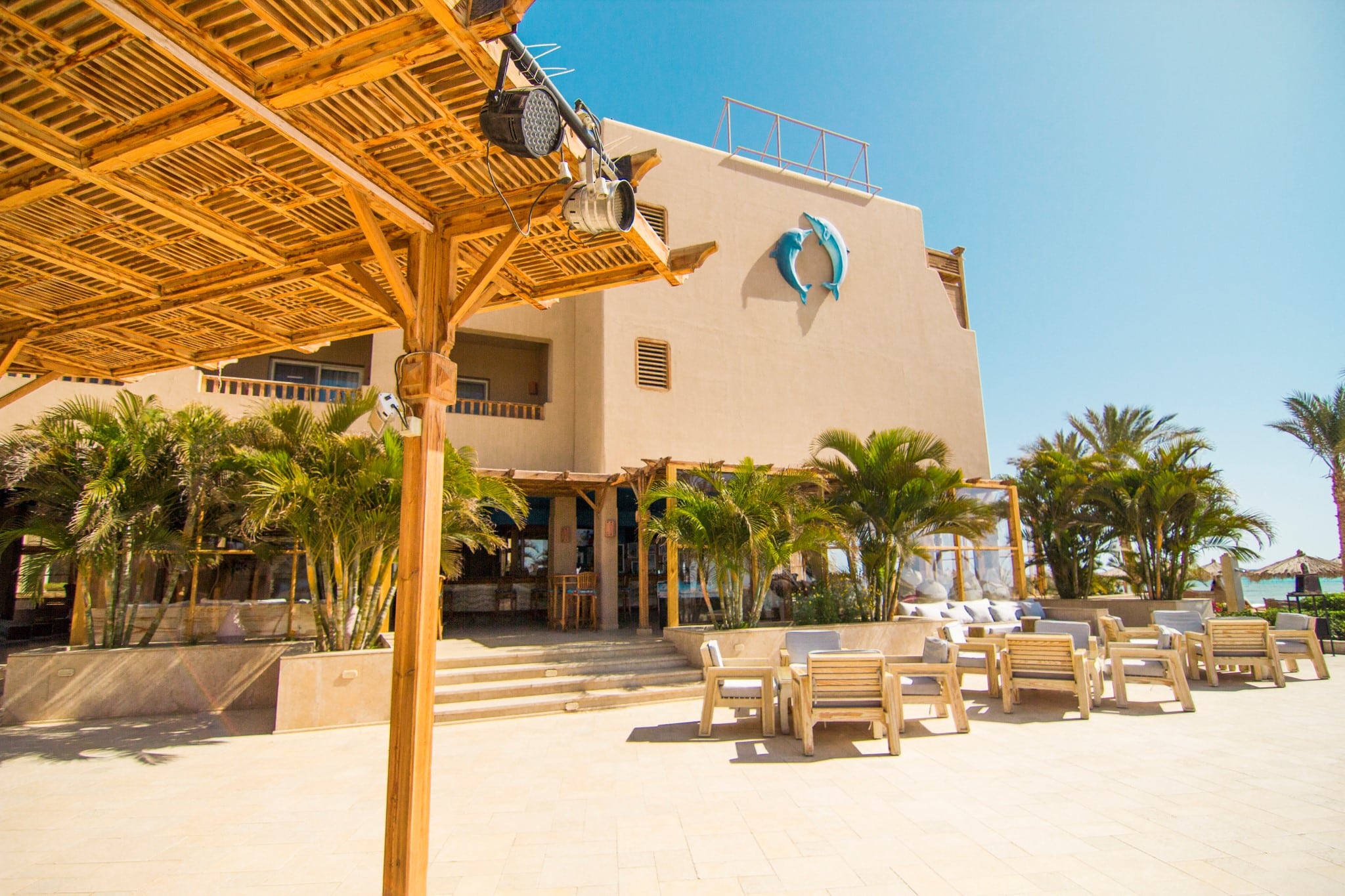
I took Easyjet from Bristol (UK) to Hurghada. Easyjet are not by any means my favourite airline but the flight was cheap and direct (except for the surprise extra £48 I was charged at the gate for my carry-on bag).
I was met at Hurghada airport by a driver and car and taken to the Breakers 28 miles (45Kilomaters) south along the coast. Once at the hotel I was too late for an evening meal and so a basic meal was delivered to my room. That and a beer from the fridge and I was fast asleep.
Early the next morning after breakfast I arrived for my rep meeting at the Orca Dive Center for 8.00am. I was immediately made to feel welcome, and after brief introductions I got some dive gear from the store, had a chat with my dive guide Mohamed and got ready to try the house reef situated at the end of a very long wooded pier where all diving gear and divers are taken out by buggies.
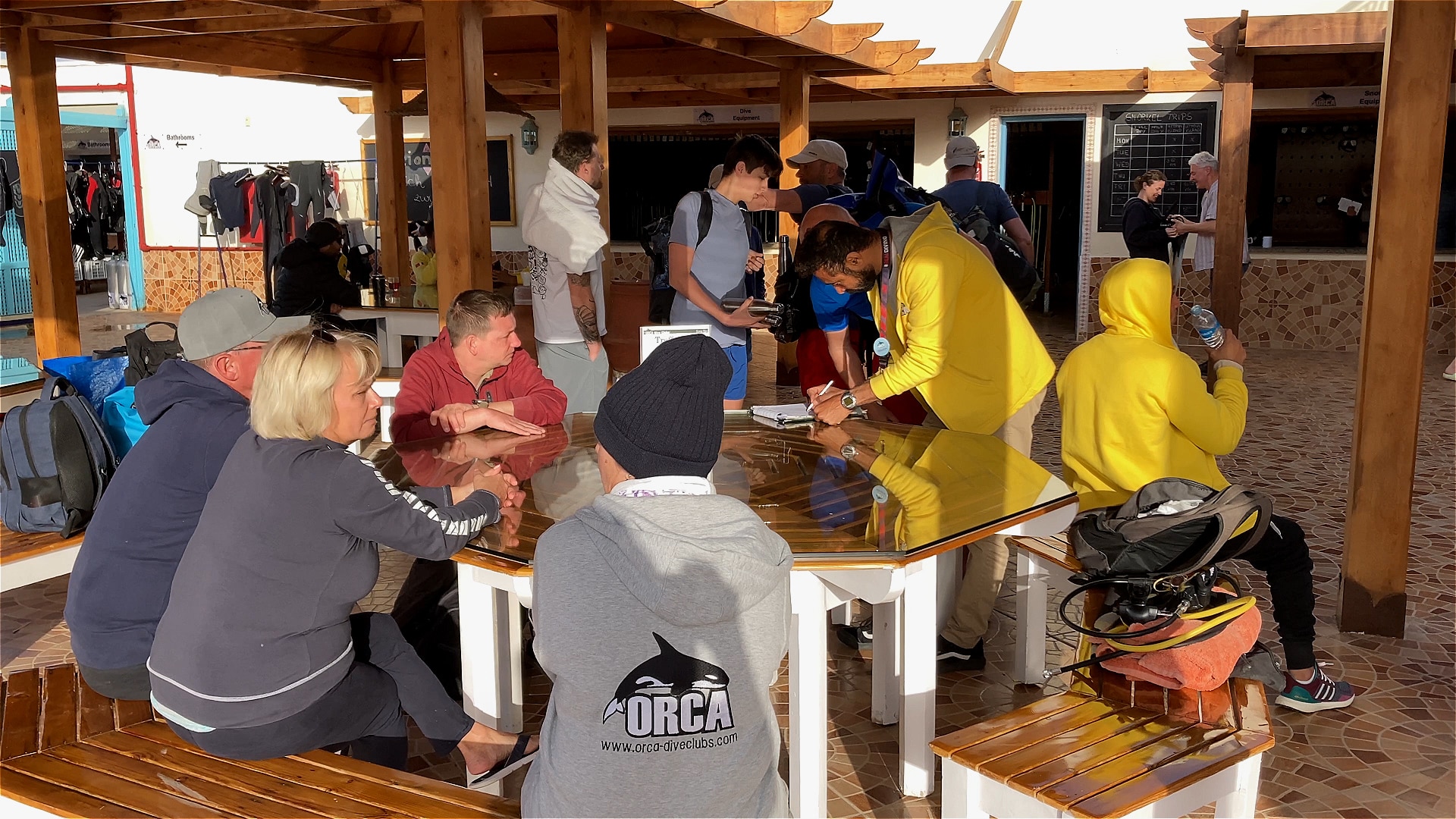
Once at the end of the pier, a helping hand from staff makes sure your gear is set and then it’s a short walk to the very end where you can either climb down a ladder of simply jump in the water next to the reef. The house reef extends both north and south giving a very easy and safe dive with plenty to see. At this time of the year the water temperature was a constant 22 degrees Centigrade and there was little or no current, so there were no issues in swimming back to the pier.
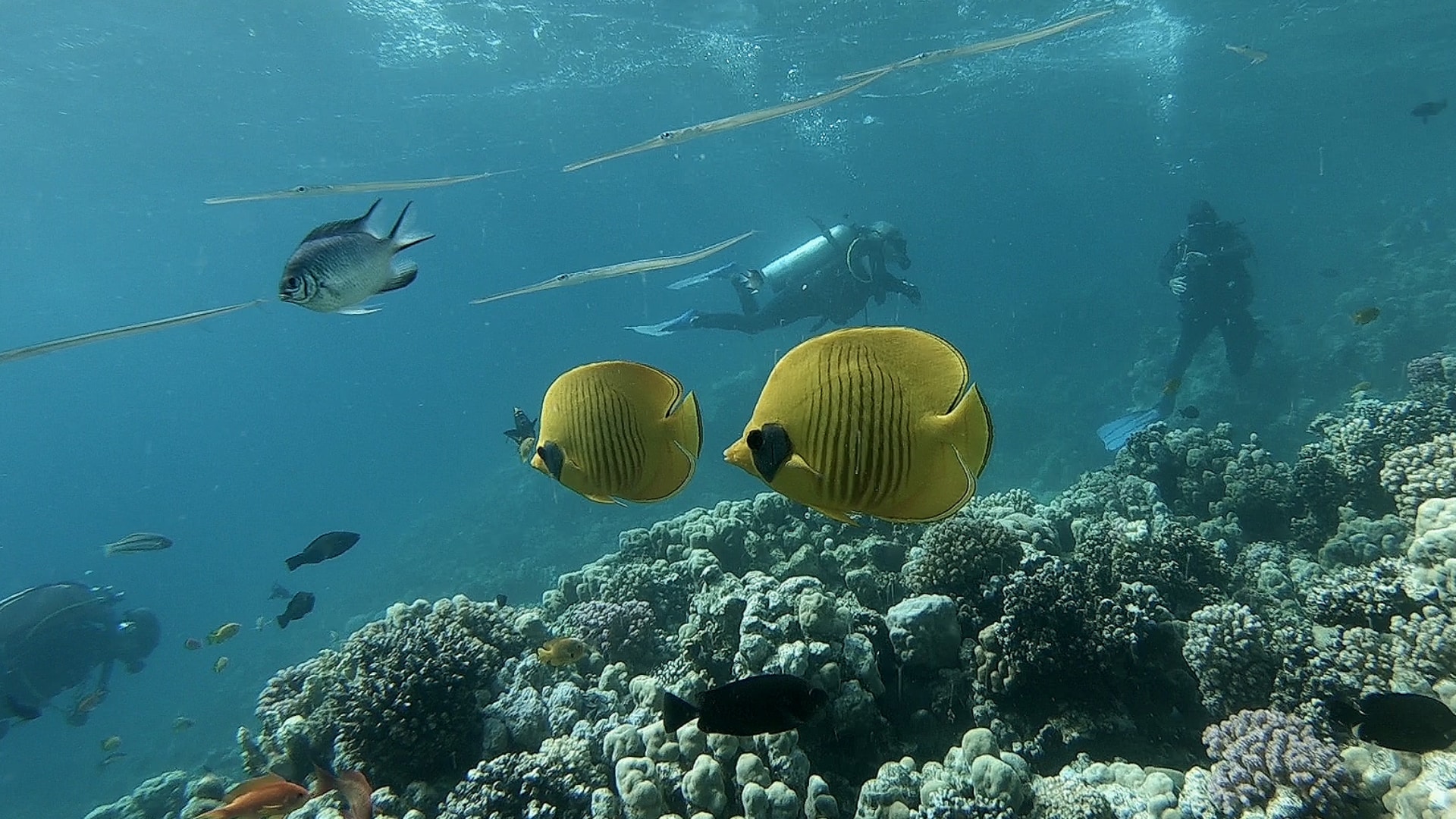
Quite a few divers were in dry or semi-dry suits, but being from the UK and used to the cold I found a 3mm wetsuit with a 3mm neoprene vest quite comfortable. Even after 50 years of diving I still find that first dive of a trip slightly nerving until I am actually underwater and then all becomes relaxed and I ease into auto diving mode. There was plenty to see with many of the Red Sea favourites along the way.
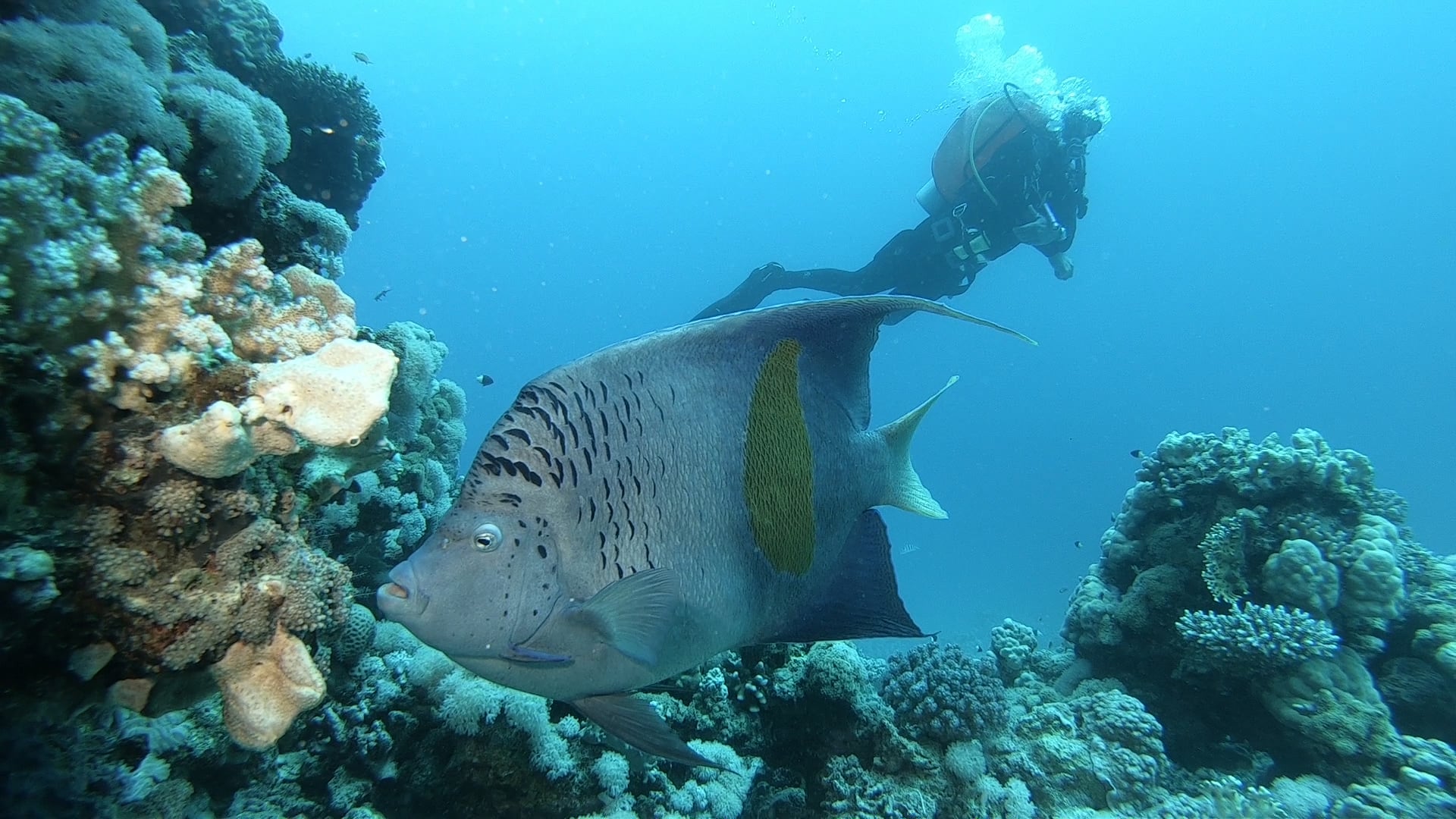
After the dive and a buggy ride back to the hotel for a very good buffet lunch I was back in the water, once again on the house reef for an afternoon dive.
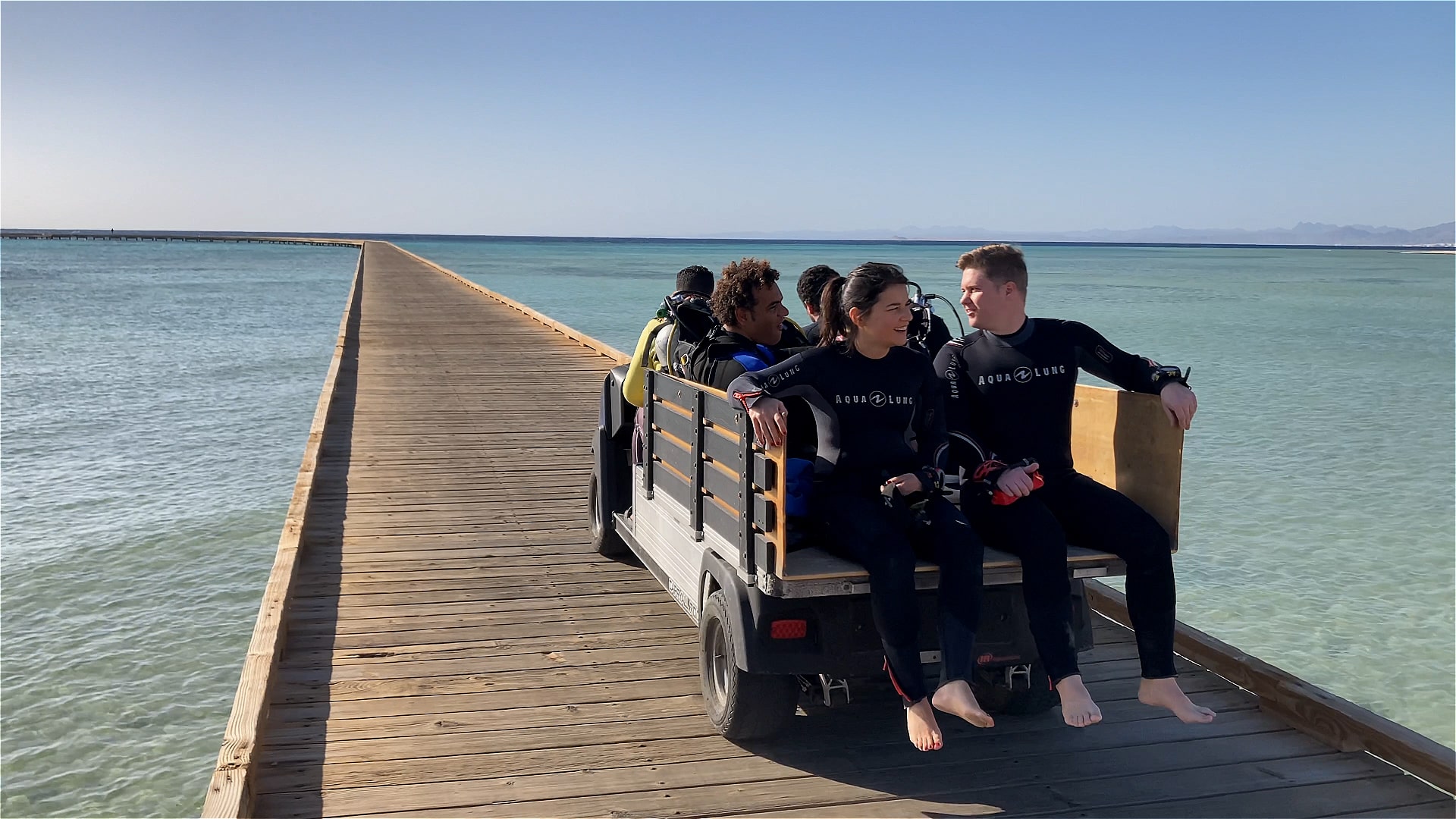
Check in for part 2 tomorrow when Jeff gets on a day boat and dives a few of the off-shore reefs.
Book your next Red Sea dive adventure with SOMABAY! For more information, visit www.somabay.com.
Stay at the Breakers Diving & Surfing Lodge when you visit! For more information, visit www.thebreakers-somabay.com.
Find out more about ORCA Dive Clubs at SOMABAY at www.orca-diveclubs.com/en/soma-bay-en.
Blogs
Jeremy Higson from Sea to Sky talks to Jeff Goodman about diving in Oman (Watch Video)
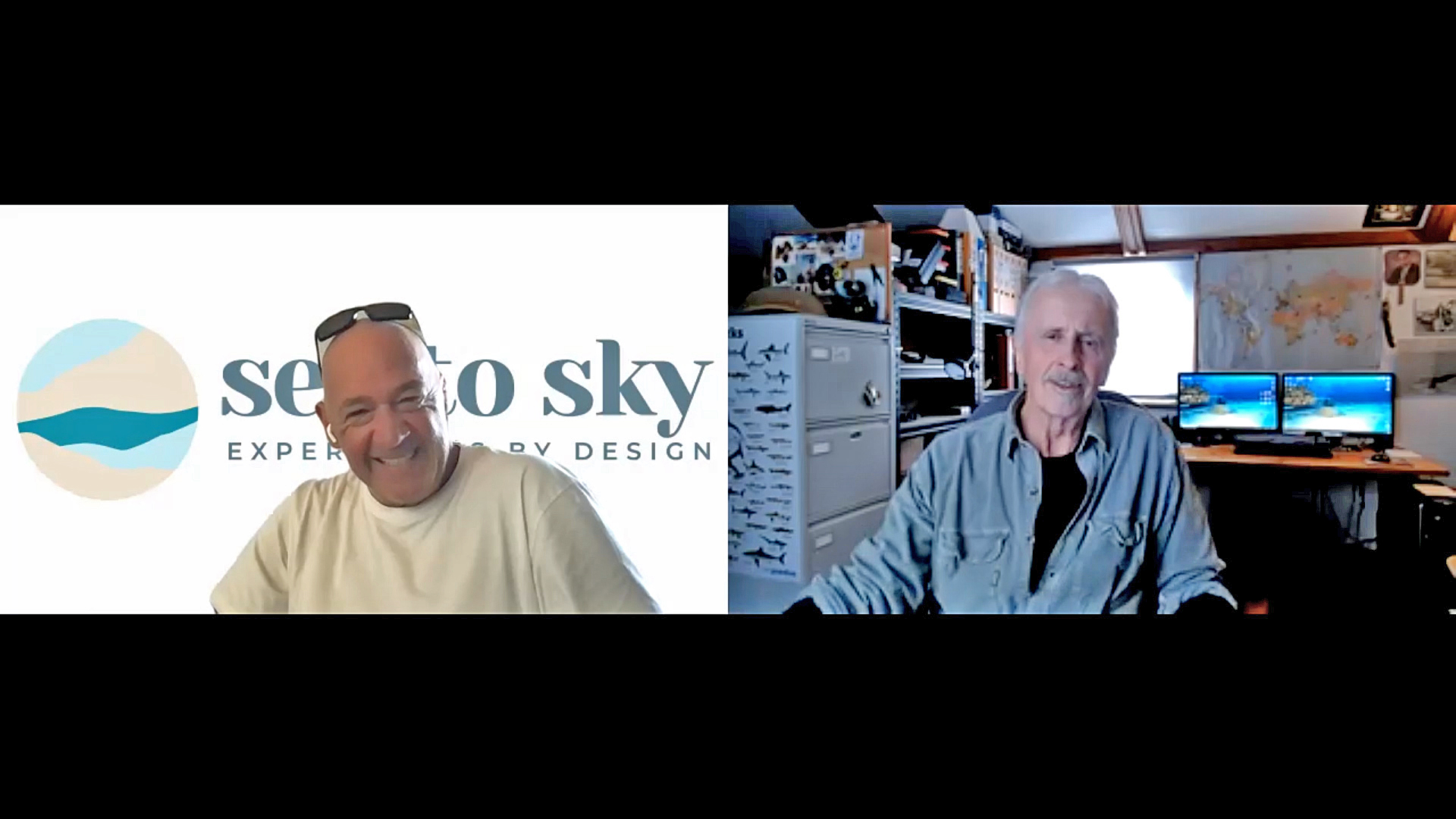
In an interview recorded exclusively for Scubaverse.com, Jeff Goodman interviews Jeremy Higson from Sea to Sky about the itineraries the tour operator offers in Oman.
For more information about diving in Oman, contact Sea to Sky now:
Email: hello@mysetaosky.co.uk
WhatsApp: + 39 379 236 7138
Website: www.myseatosky.co.uk
-

 News3 months ago
News3 months agoHone your underwater photography skills with Alphamarine Photography at Red Sea Diving Safari in March
-

 News2 months ago
News2 months agoCapturing Critters in Lembeh Underwater Photography Workshop 2024: Event Roundup
-

 Marine Life & Conservation Blogs2 months ago
Marine Life & Conservation Blogs2 months agoCreature Feature: Swell Sharks
-

 Blogs1 month ago
Blogs1 month agoMurex Resorts: Passport to Paradise!
-
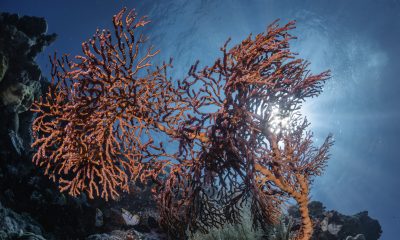
 News3 months ago
News3 months agoDive into Adventure with Photo Pro Paul Duxfield in North Sulawesi this October
-

 Gear News3 months ago
Gear News3 months agoBare X-Mission Drysuit: Ideal for Both Technical and Recreational Divers
-

 Gear Reviews2 months ago
Gear Reviews2 months agoGear Review: Oceanic+ Dive Housing for iPhone
-

 Blogs2 months ago
Blogs2 months agoDiver Discovering Whale Skeletons Beneath Ice Judged World’s Best Underwater Photograph





